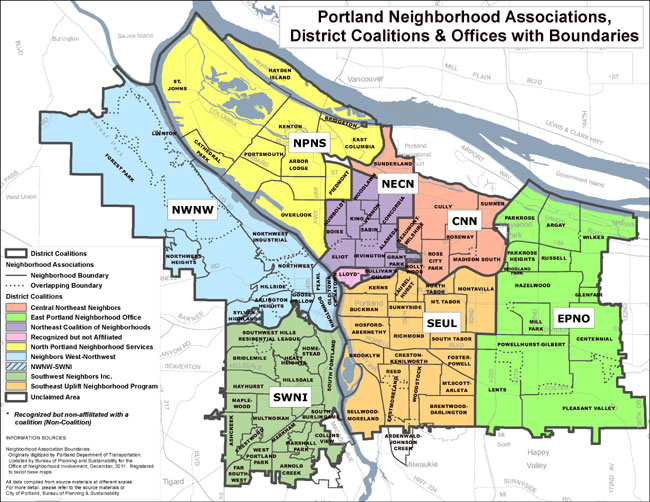
by Glenn Devitt | Sep 28, 2016 | Business Community, Outreach
In Portland’s Sunnyside neighborhood – and in other neighborhoods – we’ve collaborated with a supportive Neighborhood Association (NA), and it has been extremely productive and mutually rewarding. We offer a summary of our experience hoping that it will be useful to other Neighborhood Emergency Teams (NETs).
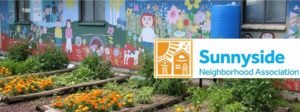
SUNNYSIDE’S RESULTS:
- In a little over a year, more than 200 non-NET neighbors have joined our email list, and hundreds more have attended meetings or outreach events. Some do not have the time or desire to get NET Basic Training, and others are satisfied preparing “only” their block using Map Your Neighborhood. That’s fine. We want all of these people to be aware of each other and to share training resources. And we want to meet them before an emergency occurs.
- Each neighbor with an emergency kit makes for one less household you’ll need to worry about in an emergency – plus, they might be able to help as a Spontaneous Unaffiliated Volunteer (SUV) or Affiliated Trained Volunteer (ATV).
- We have supported several block parties/meetings where neighbors meet and create a plan for their micro-neighborhood.
- We are integrating with our NA’s Crime Prevention Committee, and the Office of Neighborhood Involvement’s Neighborhood Watch program. It’s a no-brainer: recruit civic-minded people wherever possible.
HOW:
The “Sunnyside Prepared” committee was founded to recognize the need to work with everyone in the community who is interested in preparedness, not only NETs. Sunnyside has 6,000+ residents and fewer than 20 NETs. We need all hands on deck. The committee was proposed to and approved by our Neighborhood Association, who recognize the value in supporting this work. We proposed an itemized budget, and the NA board happily approved it out of their funds.
We also segment our monthly meetings into general “emergency prep” and NET portions. Everyone is welcome to attend all, unless we plan to discuss confidential information only approved for NETs.
PROS:
There are so many reasons to do this!
Fundraising
As you may already know, PBEM/NET enables teams to accept tax-deductible donations through the Friends of Portland Fire & Rescue for equipment cache and supplies (see NET Guidelines doc for details). We cannot raise money through NAs due to their legal structure – BUT we can request money directly from NAs for other costs like printing and postage, tabling supplies, and giveaways. So:
Mo’ Money
Request a budget from your NA! We are aware of teams receiving $250 – $1,500 annually. Keep a keen eye on your accounting and use money strictly for its approved purposes; it is very important to keep your Friends of Portland Fire & Rescue and NA accounts and ledgers separate. And proactively report to your NA how its funding improved your outreach and performance. How many people attended events? How many brochures were distributed? Also account for in-kind costs you do not incur but which support your work, e.g. materials from PBEM. Your NA needs to understand the total return on its investment.
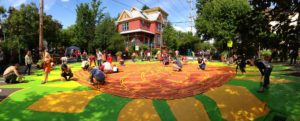
Public Outreach
You will reach a much wider audience through your NA’s calendar and newsletter, as well as NextDoor.com. Your NA probably gets a booth at local street fairs at no cost. Ask to use/share it.
School Outreach
With official recognition by your NA, school administrators will be more likely to welcome your collaboration. Mention that NETs are background-checked by PBEM; of course, school staff do not allow strangers to wander school grounds. PPS has its own background check process that they may ask you to complete.
Business Outreach
As a public agency, PBEM cannot support any activity that might be perceived as endorsing a business. However NAs can, and their endorsement legitimizes your outreach to local businesses. See the PortlandPrepares.org article NET + Business Partnership = Win Win Win. We are considering a window-sticker campaign to “brand” our neighborhood businesses for emergency preparedness.
Website
Your NA might be able to give you a page on their site at no cost (like SunnysidePrepared.com) or at least a link to your team’s page on PortlandPrepares.com.
City Discounts
Committees of NAs may place orders through the City’s Printing & Distribution office (SW 2nd & Main), whose rates are usually better than retail. Plus, with pre-approval for each order, they bill the NA directly so you don’t need to go out-of-pocket.
Satisfaction
Once you get going, you will become one of your NA’s most productive and active committees. And that leads to more support and mutual reward.
CONS:
- Neighborhood Association boards change. Ours is amazingly cooperative, though we’ve heard about contentious NAs in other parts of the city. Establish your committee outside the politics of other issues and be sure to report about the value you’re contributing. That should help ensure that your NA’s support will endure.
- At some meetings you will be mingling trained NETs with the general public, so balance NET exercises with an increase in outreach to people just beginning their personal emergency preparedness.
- Consider appointing an ATL to primarily handle outreach and ensure that you don’t neglect your other TL duties. To explore this, we plan to test separating our monthly public meetings with separate quarterly NET exercises.
We hope our experience will be useful to you. PLEASE, share your experiences with us. We would like to revise this piece in the future to incorporate great ideas that other teams share.
Glenn C. Devitt, Sunnyside Team Lead, Sunnyside Prepared Co-Chair, Friends of Portland NET co-founder, glenn@sunnysideprepared.com, 503.345.4321
Jan Molinaro, Sunnyside Assistant Team Lead, Sunnyside Prepared Co-Chair, jan@sunnysideprepared.com
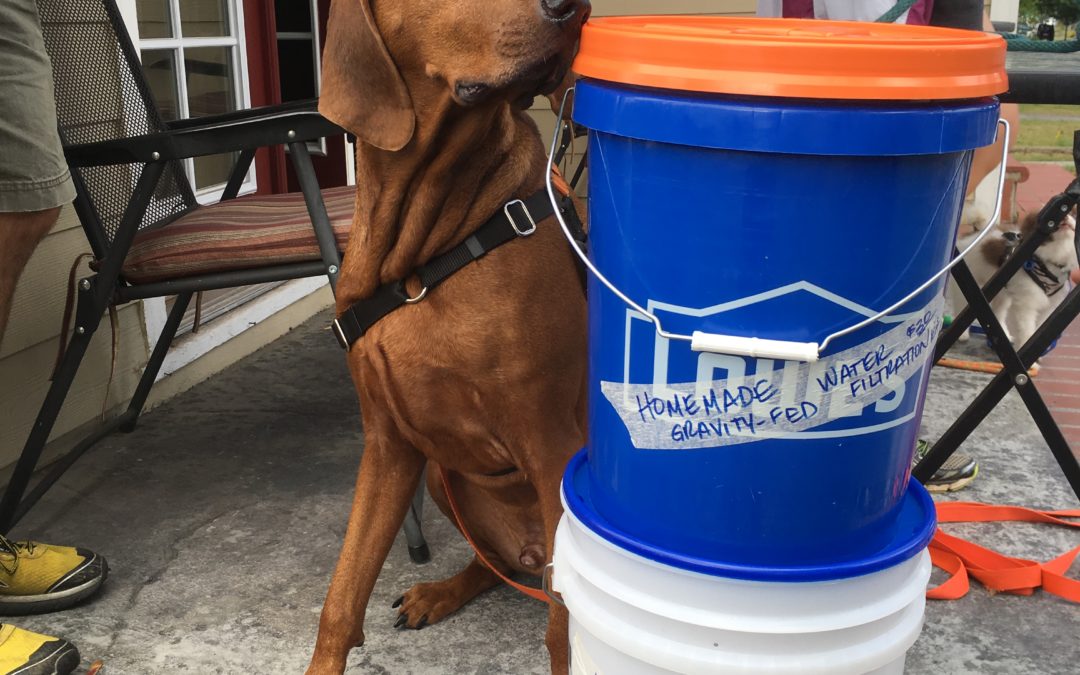
by Susan Ronning | Sep 18, 2016 | Kit Preparation & Planning
My husband and I planned a camping trip to Waldo Lake. It was a place he’d heard so much about but hadn’t yet visited. About a three weeks before our reservation, we received a notice from the campground that there would be no fresh drinking water available due to a broken line which wouldn’t be fixed in time. We could cancel our reservation with a full refund or continue on and make due by bringing our own water or filtering the lake water. Heck, we’ve been backpacking and have had to filter water before. Not to worry, we would figure something out and press on.
KING OF THE BACKPACKING TRIP
John and I had only ever used hand-pump water filters for backpacking. They are a lot of work for not much gain. On a previous backpacking trip, a friend of ours had brought along a Platypus brand gravity fed filter system designed to hang from a tree. He was KING of that backpacking trip. We took turns filling his water bag and letting his filter do the leg-work while we cooked, chatted, and slept. Gravity-fed filters… now that’s the way to go!
HOMEMADE GRAVITY SYSTEM
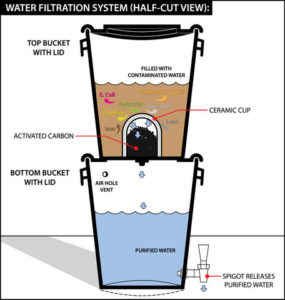 Before embarking on our camping trip, I scoured the internet looking for more gravity-fed filtration options. Lo and behold, I found a video of how to assemble a home-built system. This two-bucket ceramic gravity-fed filter system would be a perfect solution for car camping. We built it and used it successfully on that trip.
Before embarking on our camping trip, I scoured the internet looking for more gravity-fed filtration options. Lo and behold, I found a video of how to assemble a home-built system. This two-bucket ceramic gravity-fed filter system would be a perfect solution for car camping. We built it and used it successfully on that trip.
I realized this system would work perfectly in our home preparedness kit. We have rain barrels around our house and intend for that to be our water source. But drinking THAT water — uggh! It would need to be filtered.
FILTRATION IS NOT ENOUGH
After talking to more people, there were concerns about the level of sanitation. How many microns? What about viruses? It turns out that ceramic filters only filter, which is to say they remove particles and bacteria – not viruses and chemicals, so purification is still required. I’ve since found that Berkey filters can purify to the virus level as well as iodine tablets. We haven’t tried it out yet, but that’s our next step. Or we’ll just boil whatever water we don’t trust to drink.
–Written by Susan Ronning, Team Lead for the Arbor Lodge / Kenton NET (susanebe@gmail.com)
updated 2017-05-31
Have comments or want to share your findings? Share them with the PortlandPrepares Facebook Group.
WHERE TO BUY GRAVITY-FED KITS:
ADDITIONAL RESOURCES:
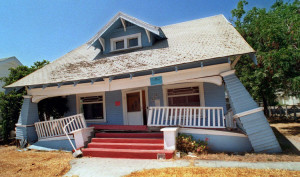
by Laura Hall | Sep 2, 2016 | Map Your Neighborhood, Outreach
How many of you live within walking distance of your friends and family? Probably not many. When the Cascadia quake hits, there will be no more internet, cell phones, or visits to friends across town. Your radius will shrink. The people in your world will be those who are actually right there near you. And there’s a good chance it will happen when you’re at home.
WHO WILL COME TO YOUR AID?

Government assistance may take weeks to arrive. Our immediate survival and long-term comfort in a disaster can depend on our connections. If your loved ones are unable to help and you don’t know your neighbors,
Who will come get you out of your collapsed house?
Who will know to look for your children or pets?
Who will put out the fire if you are not there?
Who will you band together with to share skills and supplies?
DISASTERS CREATE COMMUNITY
From that first rescue to the procuring of water, food, and medicine, we will all likely need some help. When we trade help with those near to us, we will create new close bonds based on real human needs and personal contact. We will come to know who we can trust. People will be forced to cooperate when services and supply streams fail.
BEFORE A DISASTER FORCES IT
While disasters will create communities out of necessity, having strong communities in place before a disaster is far more effective. So how can we build a sustainable community that looks out for its members? How can we function like a tribe, with personal accountability and respect? The tribes that we create around sports teams or musical preferences may be useless in the face of real adversity, but good relations with our close neighbors could save our lives.
Many of us are not comfortable knocking on doors and introducing ourselves to neighbors. We’ve become accustomed to building social bubbles and respecting others’ bubbles to the point of not knowing the person living next door. Inviting neighbors to a Map Your Neighborhood party is a good way to break the ice. You can convene around the topic of neighborhood earthquake planning and get to know each other personally in the process.
- Make it a potluck – everyone loves food!
- Do it in August – the City of Portland waives block-party fees in celebration of National Night Out (check out their great Game Ideas).
- Don’t forget to emphasize the fact that if nothing else, everyone should be stockpiling water.
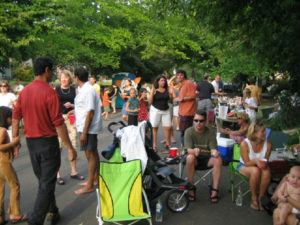
THE INTERNET CAN HELP
Social media can aid us in getting to know our neighbors. There are a number of platforms that seek to bring people together locally to convene around various topics or exchanges. Among others, NextDoor and Buy Nothing are active in Portland and worth considering.
- NextDoor.com seeks to build stronger and safer neighborhoods by providing a space for people to do things like: spread the word about a stolen car, organize a Neighborhood Watch Group, find a trustworthy babysitter, ask neighbors to keep an eye out for a lost dog, find a new home for an outgrown bike, or advertise a Neighborhood Emergency Team meeting. These online interactions often lead to in-person community building.
- The Buy Nothing Project on Facebook allows people to share good, skills, and knowledge in a format that values human connection above all else. The project’s values state, “We believe our hyper-local groups strengthen the social fabric of their communities, and ensure the health and vitality of each member… We measure wealth by the personal connections made and trust between people.”
GO SHAKE SOME HANDS
 Nothing can beat chatting with your neighbors on a regular basis. Make a point of waving and saying hello more. Make an opportunity to talk to the senior across the street about her garden. Make a double batch of muffins and go chat with the family next door.
Nothing can beat chatting with your neighbors on a regular basis. Make a point of waving and saying hello more. Make an opportunity to talk to the senior across the street about her garden. Make a double batch of muffins and go chat with the family next door.
It behooves us to prioritize people in a face-to-face way. Our most important preparedness (and happiness) goal may be to build close-proximity relationships. Long distance doesn’t help when you’re trapped under debris.
–Written by Laura Hall and Teresa Gryder
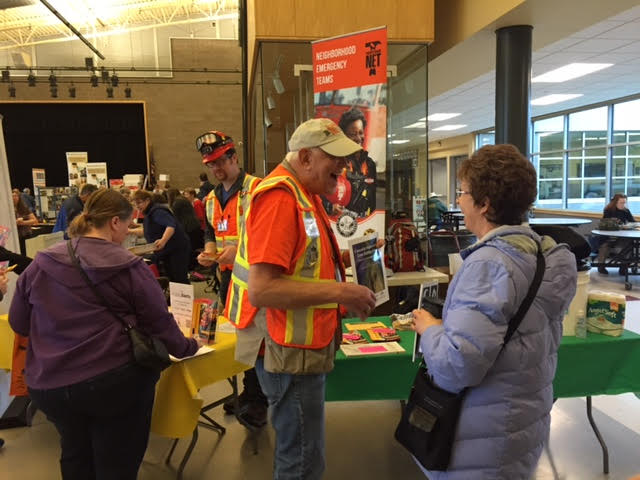
by Laura Hall | Jun 22, 2016 | Outreach
Sunday Parkways, Farmers Markets, National Night Out, Movies in the Park… It’s summer, which means it’s outreach season for Neighborhood Emergency Teams. Outreach is an incredibly important part of what NETs do. After all, we can’t help everyone, so we need to help our neighbors prepare themselves.
At the last Arbor Lodge / Kenton NET meeting, one of our talented team members (Angela Watson) presented us with this great list of tips for how to interact with the public when staffing an outreach booth.
WHY VOLUNTEER TO STAFF A BOOTH?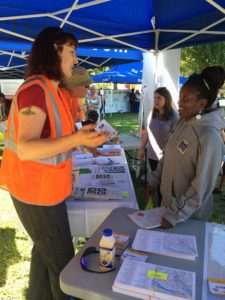
- Help your community become better prepared for a disaster and more resilient.
- Help NET by raising awareness of what NET is, recruiting new NETs, and getting donations.
- Help yourself by making new connections and earning NET hours.
WHAT DO I NEED TO DO AS A BOOTH VOLUNTEER?
- Wear your NET vest, badge, and hardhat so you’re easily recognizable as a NET member.
- Be there for your entire shift and ensure a good hand off to the next shift.
- Be visible and welcoming without being pushy.
- Speak positively about PBEM and the NET program.
HOW DO I GET PEOPLE TO COME TO THE BOOTH, AND WHAT SHOULD I SAY?
- Draw people in with eye contact, body language, and simple questions.
- Example: “Do you live in this neighborhood?”
- If YES: Point to Hazards Map and ask “Whereabouts?” and discuss nearby hazards.
- If NO: Ask “which neighborhood are you in?” and “Did you know you have a NET team?”
- Tailor the conversation to your audience.
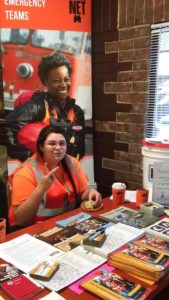
- Do they have kids? (Discuss how their school is preparing kids and the importance of creating and practicing a family emergency plan.)
- Do they have pets? (Remind them to include pet items in kit.)
- Do they work in a different neighborhood? (Talk about importance of having a go kit and having a plan to get home. Discuss the NET team or BEECN site nearest their office.)
- Are they already a prepper or NET member? (Awesome – encourage them to get more involved in NET or start engaging with their neighbors! But avoid getting sucked into non-productive conversations that might pull you away from other folks.)
- Are they in denial about “the Big One?” (Say “It’s possible it won’t happen in our lifetime – but if you’re prepared for a subduction zone earthquake, you’re prepared for almost anything! And if it does happen in our lifetime, you’ll certainly be glad you prepared.)
- Share a personal story – Why is preparedness important to you? Were you involved in a previous disaster? What inspired you to join NET?
- Recognize that getting prepared can be emotionally and financially overwhelming.
- Remind them that it’s a process and they don’t have to do everything at once.
- Recommend starting with ONE easy, achievable thing like water storage (1 gallon per person per day).
- If cost is a concern, remind them that they probably already have many items in their home or garage. Share tips for finding supplies at a discount or making your own.
- Don’t be afraid to be a little bit crazy! (Wear a Utili-Kilt, wear a sandwich board, sing a song?!)
COMING SOON: PREPARATION, SETUP, & TEAR DOWN
Stay tuned! We’re working on a generic checklist for outreach booth logistics. It will include tips for:
- Planning your outreach
 schedule for the year
schedule for the year
- Reserving booth space
- Reserving PBEM/NET materials
- Securing raffle donations
- Recruiting volunteers
- Setting up a booth (including a diagram)
- Tearing down a booth
We’re also working on a quick reference cheat sheet for volunteers that includes, helpful links, a map of NET teams, NET team lead contact info, a list of places to get water jugs and other supplies, and talking points.
–Laura Hall, Arbor Lodge / Kenton NET Assistant Team Leader, arborlodgeprepares@gmail.com
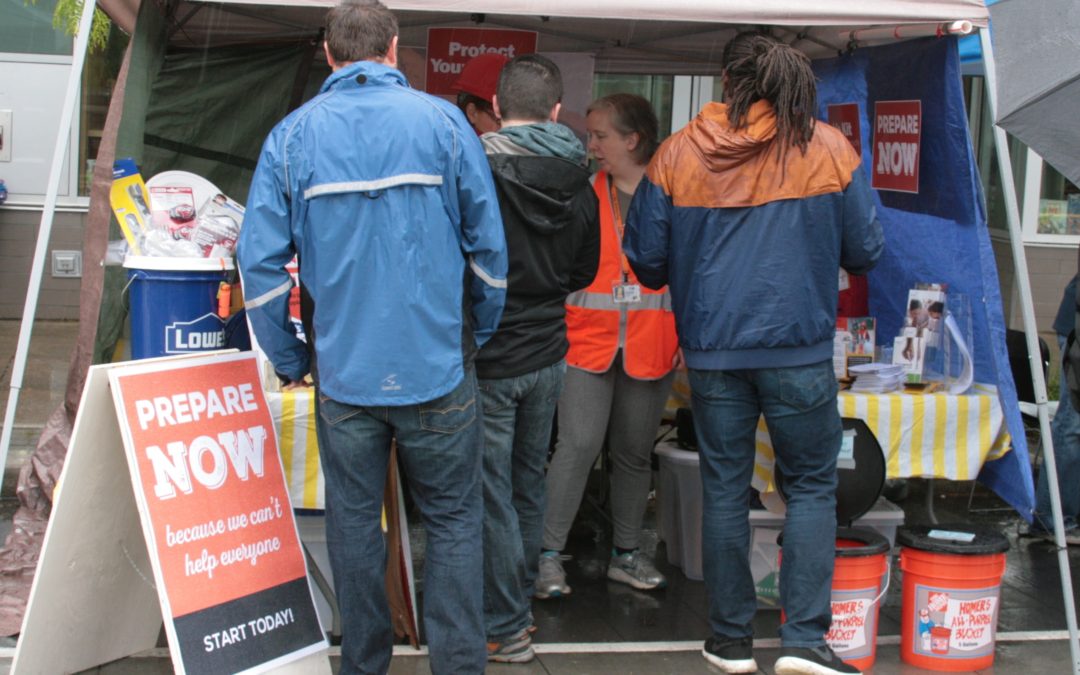
by Laura Hall | May 20, 2016 | Business Community, Outreach
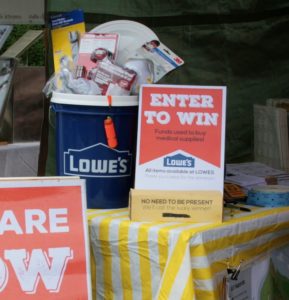 The Arbor Lodge / Kenton Neighborhood Emergency Team recently staffed a booth at the Kenton Street Fair. Our neighborhood Lowes in Hayden Island donated a bucket full of preparedness supplies, which we used as a raffle prize. It was a dreary, rainy day in mid-May, but our booth had a steady stream of visitors. At $1 a pop, we raised $60 for our team, which we’ll use for medical supplies to put in our team cache.
The Arbor Lodge / Kenton Neighborhood Emergency Team recently staffed a booth at the Kenton Street Fair. Our neighborhood Lowes in Hayden Island donated a bucket full of preparedness supplies, which we used as a raffle prize. It was a dreary, rainy day in mid-May, but our booth had a steady stream of visitors. At $1 a pop, we raised $60 for our team, which we’ll use for medical supplies to put in our team cache.
We All Win: The NET Program got attention, lives may be saved by those medical supplies, and Lowes got free advertising at our event. They also showed us that they care about the safety and wellbeing of our community.
Business partnership is something all NET and CERT teams should be thinking about. While the City of Portland funds the coordination of the NET Program, we are, in the end, non-funded neighborhood groups with a critical need for supplies and other support.
WAYS BUSINESSES CAN HELP
There are so many ways a business can help. Depending on the type of business, size, and structure, some ways will make more sense than other ways. When talking to businesses, it’s probably best just to focus on a few of these ideas instead of overwhelming them with the whole list.
In Kind Donations
Hardware stores, grocery stores, camping supply stores, army supply stores, kitchen supply stores… heck, almost any kind of store can make an in-kind donation (aka supplies). Recently the St. Johns NET Team Lead received donations from St. Johns ACE Hardware, which they raffled off at the St. Johns Bizarre.
Cash (of Course)
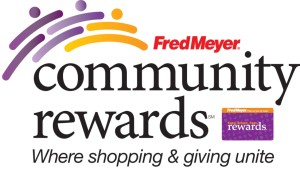 In addition to one-time, lump-sum contributions, there are also models of businesses donating cash on an ongoing basis via rewards programs. Fred Meyer’s Community Rewards Program allows shoppers to connect their Rewards Card to a NET team, which will in turn receive cash donations each month based on how much shoppers spent.
In addition to one-time, lump-sum contributions, there are also models of businesses donating cash on an ongoing basis via rewards programs. Fred Meyer’s Community Rewards Program allows shoppers to connect their Rewards Card to a NET team, which will in turn receive cash donations each month based on how much shoppers spent.
Did you know? Donations are tax deductible. We are a 501c3 organization.
Staging Area / Shelter Space
NETs are making plans for team mobilization in the event of an earthquake. Ideally, they will use a field or other open space as a staging area for their operations. But if it’s cold and rainy out, they could really use a large indoor meeting space. Businesses with a large, modern building could allow NETs to use it as a staging area or shelter after an earthquake. Identifying these types of buildings ahead of time will help immensely.
Meeting Space 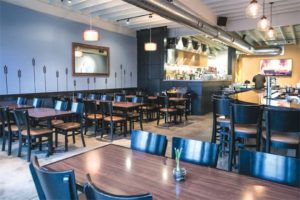
My favorite neighborhood restaurant, New American, has allowed the Overlook NET to hold team meetings in their space. Delicious local food and earthquake preparedness, together at last!
Storage Space
Many NETs are assembling supply caches, and they need somewhere to store those materials. A shed, a warehouse, a shipping container – you name it.
Promotion
Our team is talking to our local Lowes store manager about the possibility of having a NET-themed display at the end of an aisle. But it could be as simple as a flyer hung on the door of neighborhood stores.
NET Participation
 New Seasons Market takes safety and community seriously. That’s why they’re encouraging employees to ready themselves for an earthquake. They’re also working to get a few employees from each of their stores to complete NET training and get involved with local teams. Just imagine if all of our grocers did the same! Good for the business, good for the community.
New Seasons Market takes safety and community seriously. That’s why they’re encouraging employees to ready themselves for an earthquake. They’re also working to get a few employees from each of their stores to complete NET training and get involved with local teams. Just imagine if all of our grocers did the same! Good for the business, good for the community.
Preparation
Businesses can help our efforts by helping themselves. They need to educate and train employees, consider hazards in their work space, and plan for continuity of business. The NET Program is working on a way to provide support in this planning. In the meantime, resources such as Open for Business and Prepare My Business have helpful handouts and other resources.
ANYONE CAN DO IT
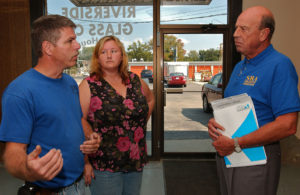 You may be thinking: “I don’t know how to solicit donations!” In the case of Lowes donating a bucket full of supplies, it was as easy as one of our team members walking in the store and talking to a manager about the work we do. You’d be surprised how willing most businesses are to contribute. Sometimes all you have to do is ask!
You may be thinking: “I don’t know how to solicit donations!” In the case of Lowes donating a bucket full of supplies, it was as easy as one of our team members walking in the store and talking to a manager about the work we do. You’d be surprised how willing most businesses are to contribute. Sometimes all you have to do is ask!
You may also be thinking: “I don’t know anything about business preparedness!” South Burlingame NET has prepared a terrific form that you can use to open a conversation with a neighborhood business.
You don’t have to be a NET member and you don’t have to be a preparedness expert to talk to neighborhood businesses.
Just tell them that you’re a concerned community member and that you can put them in touch with the Team Leader for your neighborhood’s team. They can also complete our online donation form or contact form, which will be routed to the appropriate person.
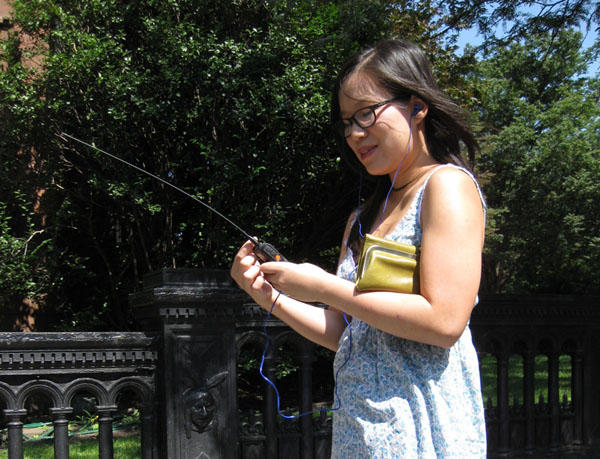
by Laura Hall | Apr 7, 2016 | Uncategorized
You read my last post about why you should become an Amateur Radio Operator (aka: ARO, aka: Ham), right? And you went out and got your license and a handheld radio, right? Great – now it’s time to practice. Portland is full of great opportunities for getting hands-on experience using your radio.
BABY STEPS… PROGRAM AND TALK: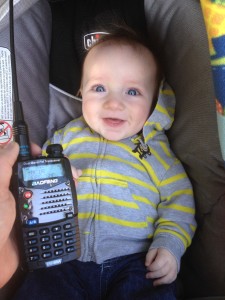
When the Big One hits, you don’t want to be fumbling with your radio and trying to read a list of frequencies. You’ll want to turn your radio on and have immediate access to the frequencies that will be used by other AROs in your area. And you don’t want to be terrified of talking if you have important messages to convey. That means you need to program those frequencies into your radio and practice using the darn thing. It’s especially important to learn when to talk and when not to talk.
It can seem intimidating at first, but once you get past these first few hurdles, you’ll be amazed at how quickly you will become comfortable operating your radio.
PROGRAMMING & OPERATIONS CLASSES:
The Piedmont Neighborhood Emergency Team is hosting two three-hour classes for newly-licensed amateur radio operators and other “hams” who have been out of action for a while or who never quite got activated. I went to one of these trainings recently, and it was fan-tastic. These classes are free, but please pre-register.
- Saturday, May 14, from 1-4pm at the Leaven Community Center, 5431 NE 20th Ave, Portland, 97211. Register here.
- Saturday, June 18, from 9am-12pm at the Leaven Community Center, 5431 NE 20th Ave, Portland, 97211. Register here.
NETS: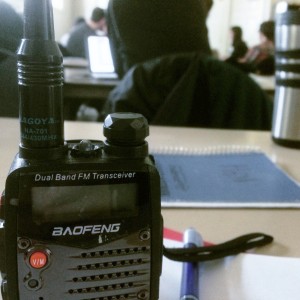
An amateur radio net, or simply ham net, is an “on-the-air” gathering of amateur radio operators. Most nets convene on a regular schedule and specific frequency and are organized for a particular purpose, such as relaying messages, discussing a common topic of interest, communicating in severe weather, coping with emergencies, or simply gathering for conversation. (Wikipedia) — This type of net is not to be confused with Portland NET, the Neighborhood Emergency Team program!
Several Portland area groups do regular ARO Nets each week. Even if you don’t feel ready to talk yet, at least listen in so that you can get comfortable with the way AROs communicate. The following are some Nets you should consider participating in.
NET Net:
The Neighborhood Emergency Team Net (NETnet) is a ham radio on-air gathering that discusses issues of interest to Portland NET members. Their primary audience is those with little or no experience on the air, but they often get check-ins from experienced hams and folks not associated with emergency communication. Anyone can listen, but you do need at least an amateur radio Technician License to transmit.
If you are a NET ARO, prospective NET ARO, or a Ham interested in emergency communication, the NETnet is a wonderful resource. Roughly 40 Hams are checking in to this net each week.
- WHEN: Sundays at 8pm
- VHF: 147.040 aka MC-6 (West Hills) or 147.320 (Saddle Mountain) or 147.380 (Cedar Mills) — use +600 kHz offset, PL tone 100.0
- UHF: 442.225 (West Hills) or 442.325 (Saddle Mountain) — use +5 MHz offset, PL tone 100.0
NETnet organizers are looking for feedback and suggestions on how to make the NETnet an even more effective training venue than it already is. Please click here to complete a short online survey.
PARC Net:
The Portland Amateur Radio Club (PARC) is a great resource for AROs in the Portland area. They have monthly in-person meetings, as well as a weekly on-air net.
- WHEN: Mondays at 7pm PT on 146.84
MC-ARES Net:
The Multnomah County Amateur Radio Emergency Service (MC-ARES) is a field organization of the American Radio Relay League (ARRL). Members are active in community service. They also have monthly in-person meetings, as well as a weekly on-air net.
- WHEN: Wednesdays at 7pm PT on the 146.84 repeater
NTTN Net:
The Northwest Oregon Traffic and Training NET (NTTN) is handles formal written traffic into and out of the state of Oregon.
- WHEN: Daily at 18:05 (6:05 pm) PT on 146.80 Repeater with 07.2 Hz PL tone
MEET YOU ON THE NETS!
Joining in on a Net can be intimidating, but AROs are a welcoming and forgiving group. This is the best way to learn to use your radio so that you’ll be effective in an emergency situation. I hope to meet you on a Net sometime soon!
–Laura Hall, Arbor Lodge / Kenton NET Assistant Team Leader, arborlodgeprepares@gmail.com
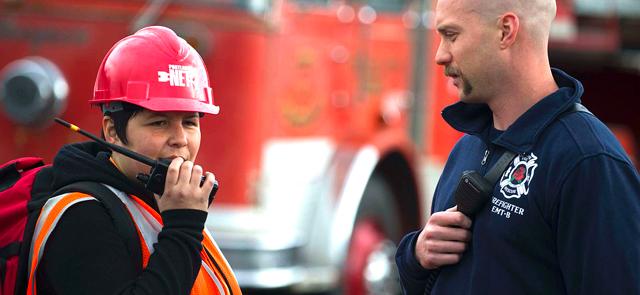
by Laura Hall | Mar 22, 2016 | Radio Communication
Here’s the thing about radios: they might save your life. After a major earthquake, modern communication devices will likely fail us. Cell networks will be damaged or jammed, landlines will be down, and your internet won’t be functioning. So how will we communicate with one another? A technology that was first developed over 100 years ago… amateur radio!
WHAT IS AMATEUR RADIO?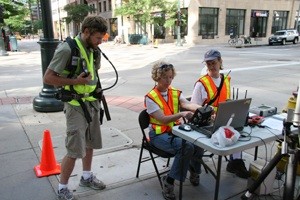
Amateur Radio (ham radio) is a form of two-way radio communication. It is restricted to certain frequencies so that it won’t interfere with government, military, and commercial radio use. Amateur Radio Operators (aka: AROs or Hams) have basic knowledge of radio technology and operating principles and must be licensed by the Federal Communications Commission. The FCC created this designation so there would be a pool of radio experts who could provide backup during emergencies, and Hams have indeed proved themselves useful in this way.
HOW HAMS HELP
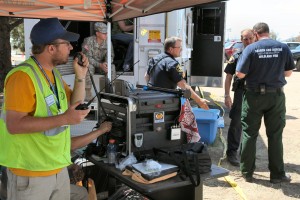 Amateur radio operators often volunteer at community events such as races where important information (like injury alerts or route issues) must be passed quickly to multiple people over long distances and an FRS/GMRS radio (aka: walkie talkie) wouldn’t have enough power to do the job. This is a great way for Ham operators to practice their skills.
Amateur radio operators often volunteer at community events such as races where important information (like injury alerts or route issues) must be passed quickly to multiple people over long distances and an FRS/GMRS radio (aka: walkie talkie) wouldn’t have enough power to do the job. This is a great way for Ham operators to practice their skills.
They can also help out in emergencies such as hurricanes and earthquakes. “For instance, the Amateur Radio Service kept New York City agencies in touch with each other after their command center was destroyed during the 9/11 tragedy. Ham radio also came to the rescue during Hurricane Katrina, where all other communications failed, and the devastating flooding in Colorado in 2013.” (ARRL.org)
AMATEUR RADIO VS. WALKIE TALKIE:
Many people have two-way radios that they’ve purchased for home use. Often called walkie talkies, these are either FRS or FRS/GMRS radios. FRS, or Family Radio Service, radios do not require a license to use. Like amateur radio, GMRS, or General Mobile Radio Service, radios do require a license to use. If you have a walkie talkie radio that includes both FRS and GMRS frequencies, you must be careful not to use the GMRS frequencies unless you have a license.
An FRS/GMRS radio can usually only reach a few miles – or a few city blocks if there are buildings, trees, etc. obstructing the signal. Depending on the strength of the power source and the use of radio relays, amateur radios can communicate across the globe. Clearly the amateur radio is a better option for use in urban areas. And if you aren’t already sold on it, these days an amateur radio often costs less than an FRS/GMRS radio. I got my handheld Baofeng UV-5R on Amazon for $25!
OKAY, SIGN ME UP!
If you’d like to become an amateur radio operator, the first step is to study for the FCC licensing test. There are three levels of licensing: Technician, General, and Extra. Technicians operate on a more limited range of frequencies than those with the General or Extra license, but it’s the most common type and sufficient for most people’s needs.
Some people can pass the test just by studying online materials or books, but the rest of us need to take a class.
Study Materials
Classes in Portland
- The Portland NET program often offers Ham classes. Once you’ve completed the NET Basic Training, you’ll have access to an array of advanced trainings, including amateur radio.
- The Piedmont Neighborhood Emergency Team is offering free Technician classes on April 30 and June 4, 2016. Register at http://pdxpiedmont.net.
Where to Take the Test
- If you take the amateur radio class through the NET program, testing will be done at the end of the class
- The National Association for Amateur Radio (ARRL) publishes a list of testing options by location
STAY TUNED…
My next blog post will be about what to do once you’ve passed the test. There are tons of great resources in Portland for new Hams who want to get practice using their radios.
–Laura Hall, Arbor Lodge / Kenton NET Assistant Team Leader, arborlodgeprepares@gmail.com
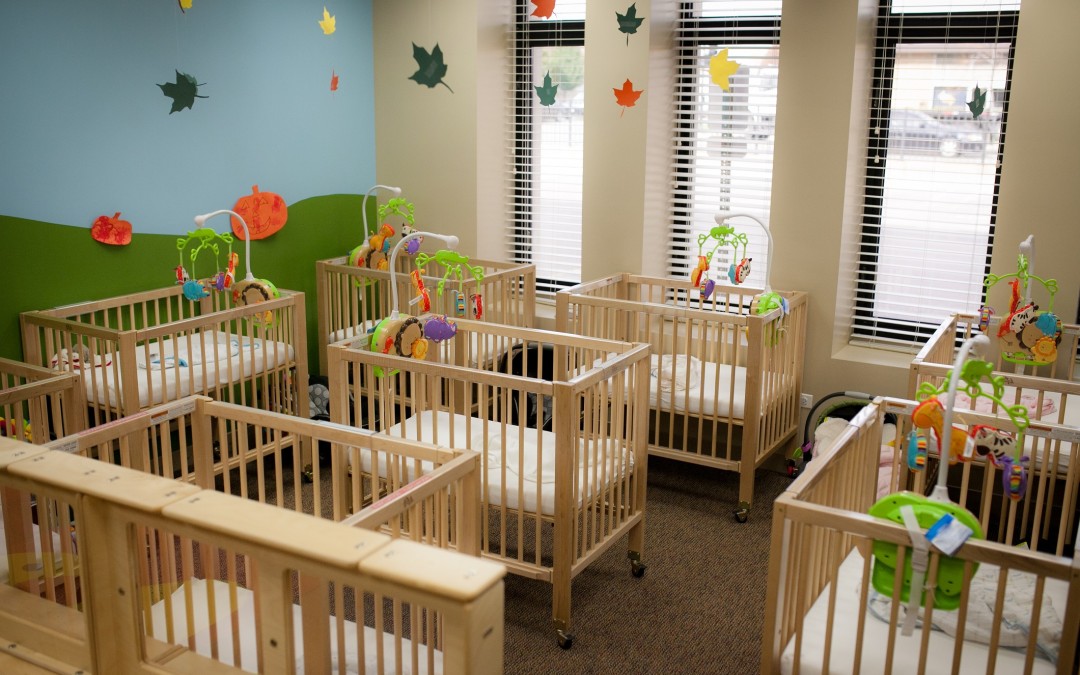
by Laura Hall | Feb 27, 2016 | Uncategorized
I became interested in emergency preparedness when I was pregnant with my first child. I could handle my own mortality, but my child’s? No way. These days I think about all children, not just my own. Lately I’ve been asking childcare providers in my community what they’re doing to prepare for an earthquake. Read on to see what a few of them have told me. If you have concerns about your child’s facility not being prepared, consider sharing this info with them.
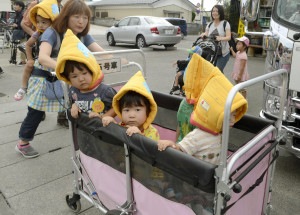 PHYSICAL PREPARATION
PHYSICAL PREPARATION
- Consider having your facility retrofitted, and make sure water heaters are strapped to the wall.
- Secure top-heavy furniture with brackets or straps, cabinet doors with latches, and smaller items that could fall with museum putty.
- Make sure all staff know how to shut off electricity, gas, and water. Make sure staff are aware if there is an asbestos situations that would necessitate evacuation.
- Have all of the same preparedness supplies as a regular home, plus food/water reserves to last several days or weeks for all children and staff. Visit the Portland Bureau of Emergency Management’s Preparedness Resources page for detailed information about how to make plans and build kits.
- Have provisions for sheltering in place outside the facility (back yard), in a hazard-free area nearby (park, etc.), and a location further afield (if a toxic situation arises near the facility).
- Have parents prepare a “comfort kit” for their child, and add a space blanket, poncho, and dust mask to each one.
COMMUNICATION
- Conduct drills frequently. Make sure everyone knows the drill: drop, cover, hold. Identify a safe gathering space outside for after the shaking stops.
- Communicate with families several times a year about this issue. Make it clear to them that you will do your best to care for children until they can arrive, but they should have backup plans in place for someone else to pick up their children in case they are unable to get to the facility.
- Have hard copies of all parent information, including work address and emergency medical forms, ready to go with you once the shaking has stopped. Have an out-of-state (non-West coast) contact number for you and families to use as a point of contact for updates, as local numbers will not go through.
- Encourage families to discuss earthquake safety at home and prepare their own kits.
- Be prepared to deal with the children’s emotions after an earthquake. They will be scared and need lots of reassuring. Use physical reassurance (hugs), and make sure they understand that you will take care of them until their parents arrive.
- Keep in touch with your local Neighborhood Emergency Team so that you know what they’re planning, and consider Other Ways to Prepare.
TRAINING
- Consider getting NET training for you and your staff. NET volunteers know how to do light search and rescue, basic disaster medicine and triage, radio communications, fire suppression, disaster psychology, and trauma intervention.
For a more in-depth look at childcare facility preparedness, read Multnomah County’s Child Care Center Crisis / Disaster Response Handbook. This is an excellent tool that covers most of what a facility would need to be prepared.
–Laura Hall, Arbor Lodge / Kenton NET Assistant Team Leader, arborlodgeprepares@gmail.com
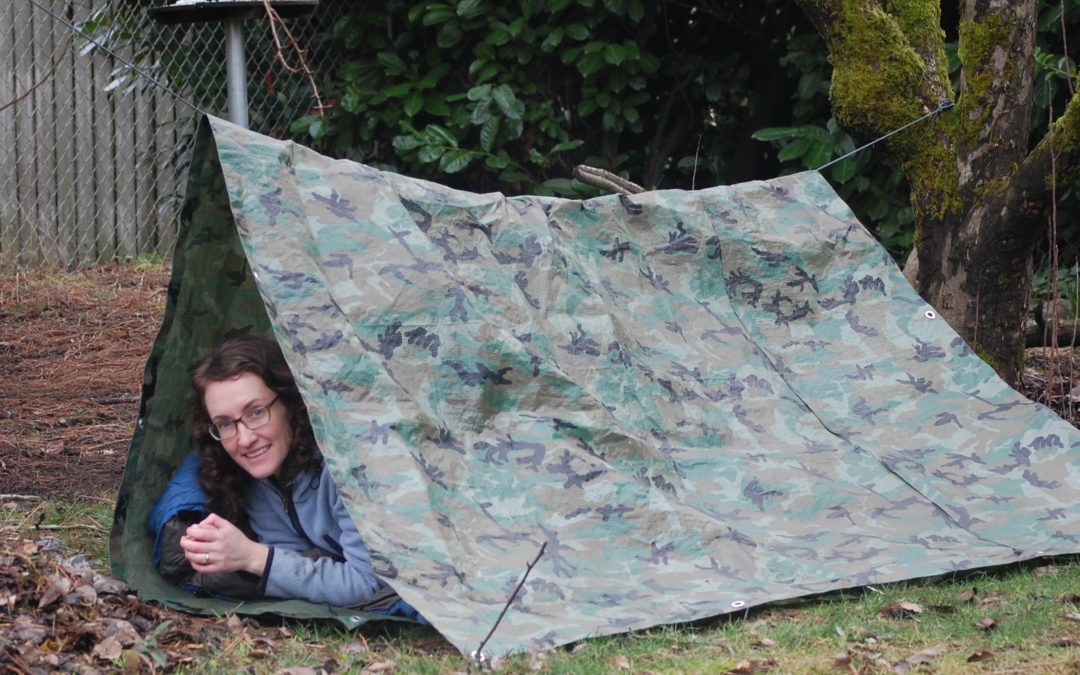
by Laura Hall | Feb 19, 2016 | Training
One of the advanced trainings that the Portland Bureau of Emergency Management (PBEM) and Portland Fire & Rescue offer for NET members is knot tying.
How are knots useful?
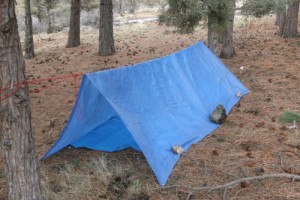 Uh, how aren’t they useful? After an earthquake, you may need to attach a tarp to a tree to create a makeshift shelter, tie down a load of gear to a truck or cargo bike, carry water a long distance, make a clothesline for drying things, etc. Knowing just a few basic knots will prepare you for this, and it can be useful in everyday life as well!
Uh, how aren’t they useful? After an earthquake, you may need to attach a tarp to a tree to create a makeshift shelter, tie down a load of gear to a truck or cargo bike, carry water a long distance, make a clothesline for drying things, etc. Knowing just a few basic knots will prepare you for this, and it can be useful in everyday life as well!
PBEM’s Knots Guidebook:
Check out the Portland NET Knots Guidebook to learn eight highly useful knots. The guide includes knot tying terminology, information about rope safety, advice about what type of gear to buy, and instructions for the following knots: bowline, clove hitch, figure eight, munter, overhand, prusik, square knot, and water knot.
Trucker’s Hitch:
A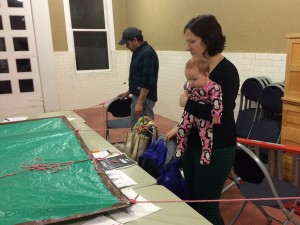 t our NET meeting last week, we practiced another highly useful knot: the trucker’s hitch. It’s a compound knot commonly used for securing loads on trucks or trailers, but it’s also great for making a tarp shelter. It gives you a 2-1 mechanical advantage when tightening the rope. Be careful though. You can actually damage the object you’re tying down because of this! This knot holds fast and is easy to untie – traits of any good knot.
t our NET meeting last week, we practiced another highly useful knot: the trucker’s hitch. It’s a compound knot commonly used for securing loads on trucks or trailers, but it’s also great for making a tarp shelter. It gives you a 2-1 mechanical advantage when tightening the rope. Be careful though. You can actually damage the object you’re tying down because of this! This knot holds fast and is easy to untie – traits of any good knot.
Great Knot Tying Resources:
There are hundreds of knots you could learn, but knowing just a few is enough for most people. It’s more important to be able to tie a few standard knots automatically while under duress than to learn many knots and not know them well.
Now go get a rope and start practicing!
–Laura Hall, Arbor Lodge / Kenton NET Assistant Team Leader, arborlodgeprepares@gmail.com
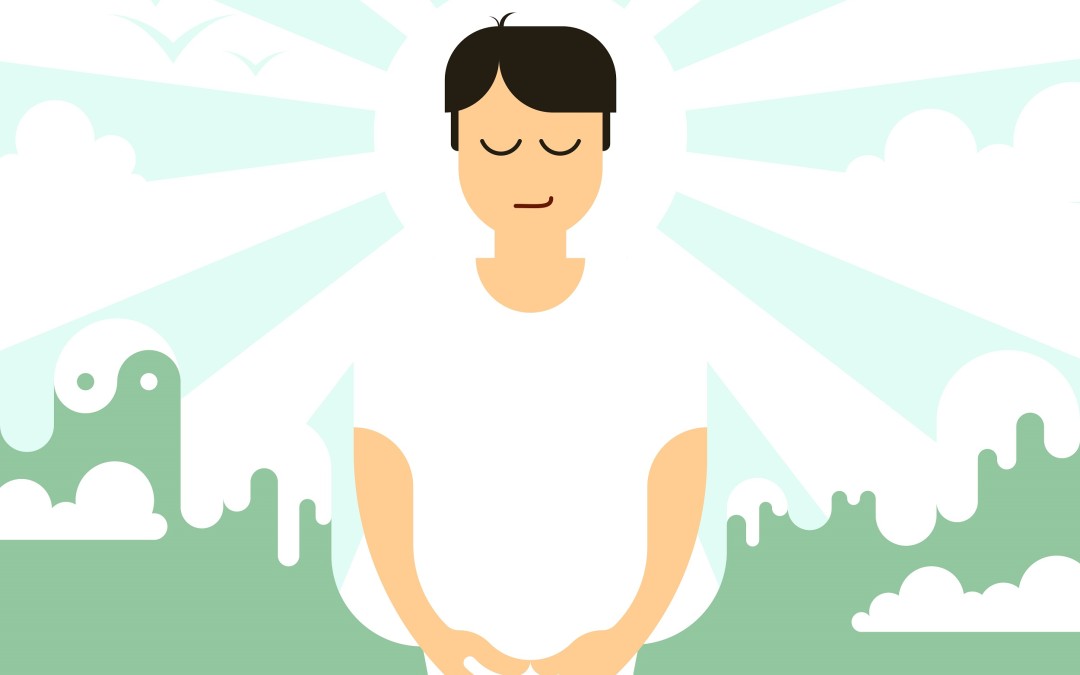
by Laura Hall | Feb 14, 2016 | Disaster Psychology
It’s happening – the earth is shaking. Furniture is dancing across the room, you’re under a table and hanging on (right?), and all you can hear is rumbling. You’re probably not feeling particularly calm. In fact, your heart feels like it’s racing a mile a minute. First responders call this the adrenaline dump. Here’s what can happen to your body when your heart increases.
Effects of Hormonal Induced Heart Rate Increase
- 60-80 BPM: Normal resting heart rate, normal body function.
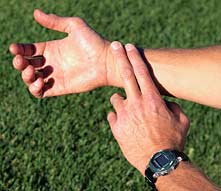
- 115 BPM: Fine motor skills begin to deteriorate.
- 115 to 145 BPM: Optimal survival and combat performance level for complex motor skills, visual reaction time, and cognitive reaction time.
- ABOVE 145 BPM: Complex motor skills begin to deteriorate.
- 175 BPM: Cognitive processing deteriorates; vasoconstriction (reduced bleeding from wounds); loss of peripheral vision (tunnel vision); loss of depth perception; loss of near vision; auditory exclusion (tunnel hearing).
- ABOVE 175 BPM: Irrational fighting or fleeing; freezing; submissive behavior; voiding of bladder and bowels; gross motor skills (running, charging, etc.) at highest performance level.
This data is for hormonal induced heart rate increases resulting from sympathetic nervous system arousal. Exercise induced increases will not have the same effect. – 1997 Siddle and Grossman
Tactical Breathing to Slow Heart Rate
Tactical or “combat” breathing is a technique used by military, police, and other first responders to slow heart rate and regain normal biochemical functioning.
HERE’S HOW TO DO IT:
- Breathe in through your nose to the count of 4.
- Hold your breath to the count of 4.
- Breathe out through your lips to the count of 4.
- Hold your breath to the count of 4.
- Repeat until you feel your body and mind relax.
Vary the number of counts to match your body’s ability and comfort level.
USE IT IN EVERYDAY LIFE:
This technique can be useful without practice, but you’re much more likely to use it in a stressful situation if you practice it regularly. Do it before a job interview. Do it during rush hour traffic. Do it after a stressful encounter to help you calm down. The more you do it, the more likely you are to remember it when you need it most.
–Laura Hall, Arbor Lodge / Kenton NET Assistant Team Leader, arborlodgeprepares@gmail.com































